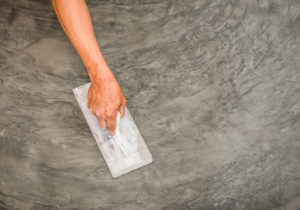It’s common for a homeowner to stain their concrete and assume that the slick look will last for years to come. The truth is that this can be the case but it can also be easily damaged. Much of the issue comes with the answer to this simple question: Have you sealed the concrete? Read on to learn more about the ways moisture can get trapped under the sealer, which could result in clouding of the membrane and a white residue. Then contact Fuller Stone Care at 855-205-0972 to find out about professional concrete sealing services.
Avoiding issues during the application process
There are two main ways that moisture problems develop. The first is that the sealer comes into contact with moisture while the sealer is being applied. Cures, sealers, and cures and sealers are all made to handle varying levels of contact with moisture. Cures and curs and sealers can handle more moisture, which means that they can be applied to high-moisture-content concrete (also known as green concrete) without turning white or clouding up.
On the other hand, a decorative sealer can’t put up with much moisture at all. This is why we never apply a decorative sealer until the concrete has cured for at least 28 days. If a decorative sealer is applied to green concrete, then you can bet on the fact that it’ll eventually develop a white haze. This is all about the resin the coating is made from and the ways in which that resin responds to contact with moisture.
Use a high-quality sealer
The second way that moisture problems can develop is when the sealer is too permeable. In short, this means that water is readily able to get through the membrane. How permeable the sealer is will depend on the solids type, content, and thickness. For example, every exterior acrylic cure, cure and seal, and sealer is designed for some amount of permeability when it’s applied at 300 – 500 square feet a gallon. The lower the solid content or the thinner the membrane thickness is, the more moisture is going to get through the sealer without it getting trapped and eventually turning white.
This is why you want to apply not only the right sealant but the right amount of thickness. This is especially true when you’re dealing with high-solids-content products, i.e. those with more than 25%. The higher the solids content is, the lower your margin of error will be. In most cases, moisture related issues with sealers are caused by overapplying high-solids cure, seals, or sealers.
Avoid moisture by letting the professionals handle the job
Now you have an idea of what can cause moisture damage to stained and sealed concrete. Remember that though it may save you money in the short term to do it yourself, when you trust the professionals to handle these projects for you, then you end up with a much better outcome. This can save you in the long run. To learn more about options and costs, contact Fuller Stone Care at 855-205-0972 for a free legal consultation.

